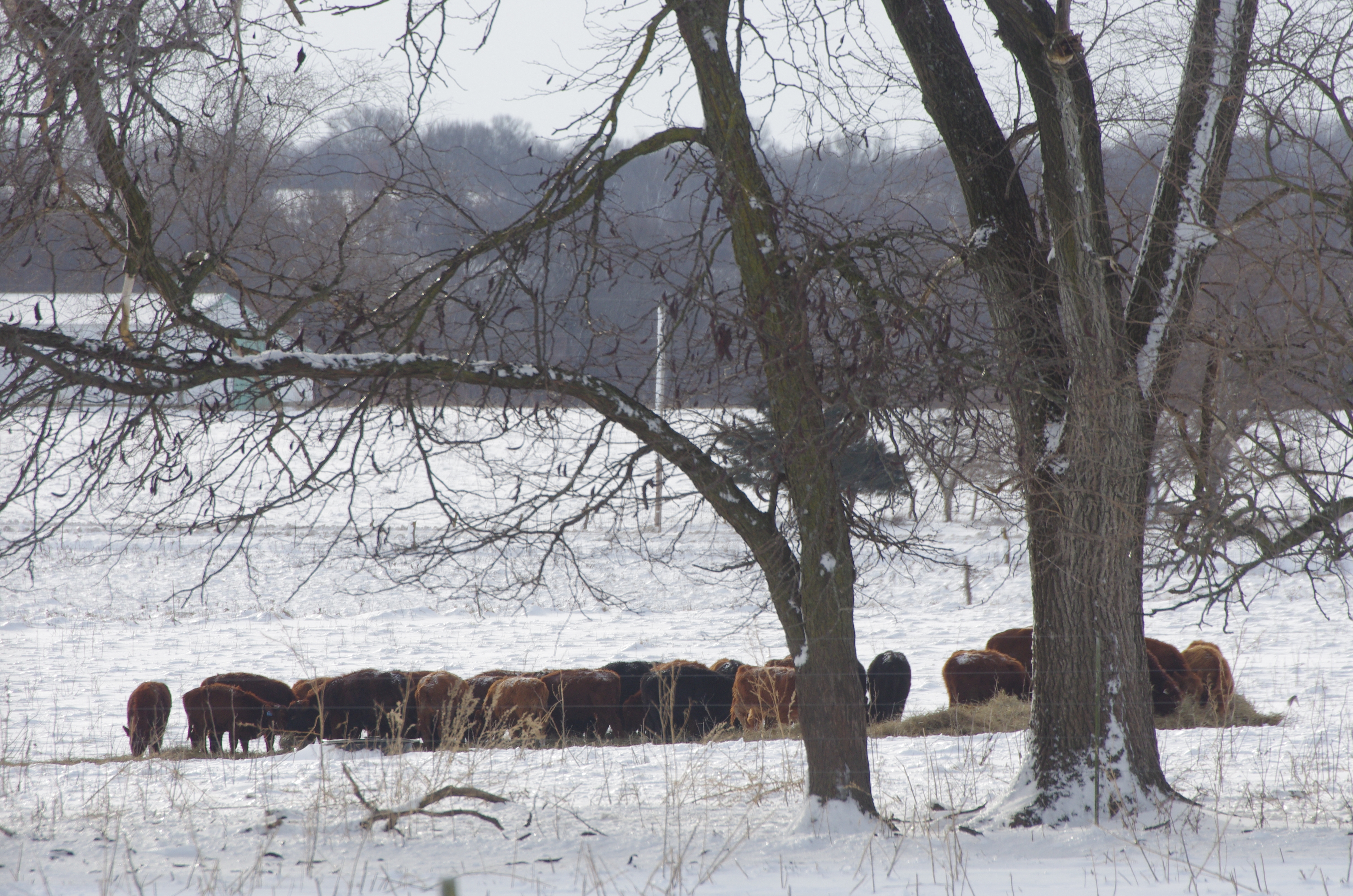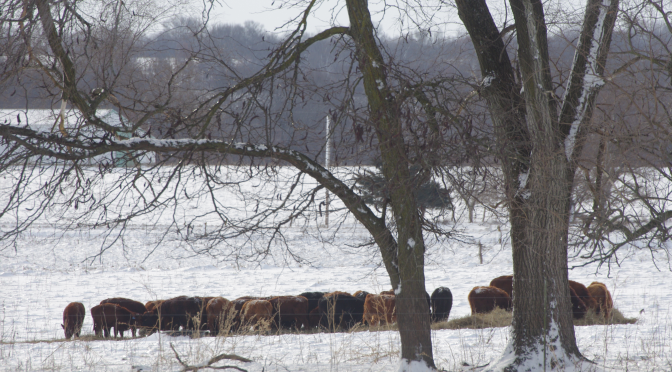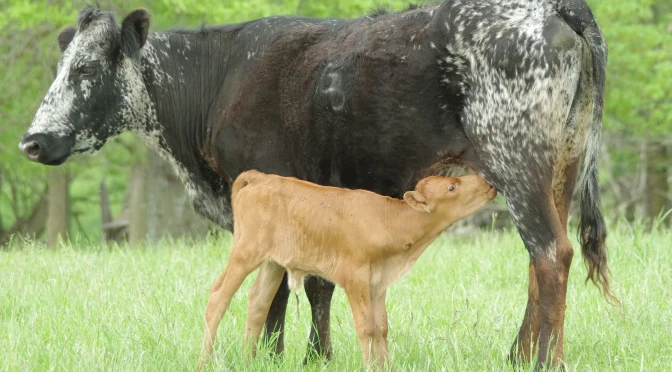Wintry blast of arctic weather across the entire United States hit north Missouri early Friday (12 Jan 24) and temperatures have continued to plummet. This morning was -14F with a windchill of -34F. Well above any record cold, but mighty uncomfortable at best. Grazed pastures are now well frozen even under the 8-12 inches of snow.
Although, we have plenty of standing forage for grazing, my husband has been keen to unroll big bales of hay to the cattle. If he wants to do it, that’s fine by me. It looked last summer that there would not be enough grass for winter, so he had baled up and purchased a lot of big bales of hay and since we store most of it outside and directly on the ground, right now is a perfect time to feed it up. No mud and the cows do appreciate it although with the extreme temps, they quickly adapted to it being substitutionary feed vs supplemental feed. Once the weather breaks, though, they’ll go back to grazing that green grass under the snow.
It is good for Allen to get out although he is mask wearing and son, Dallas, goes as well to get the gates and to take off the net wrap. Although he is in remission from his AL Amyloidosis cancer, he is not out of the woods yet and must still limit exposure to dust, dirt, livestock, large groups of people, young children, and pets.

These young long time weaned calves are experiencing their first harsh winter without their mums. Since i ‘retired’ the pregnant cows were sold mostly last year (2023) and carry over the calves and the remaining cows to sell in January 2024. We’ve had too much income due to drought sales and that Allen sold all his fall calving cows because of his cancer and he has no help to manage it all. I can handle the 350 or so spring calvers, bulls, and replacement heifers, (with some help from my sons) but the task of calving out that many fall calvers with Allen’s weekly trips to KU Med for treatments, then the 2-week hospital stay followed by 2 weeks at Hope Lodge near the hospital (i had to stay with him as well) was just going to be too much.










